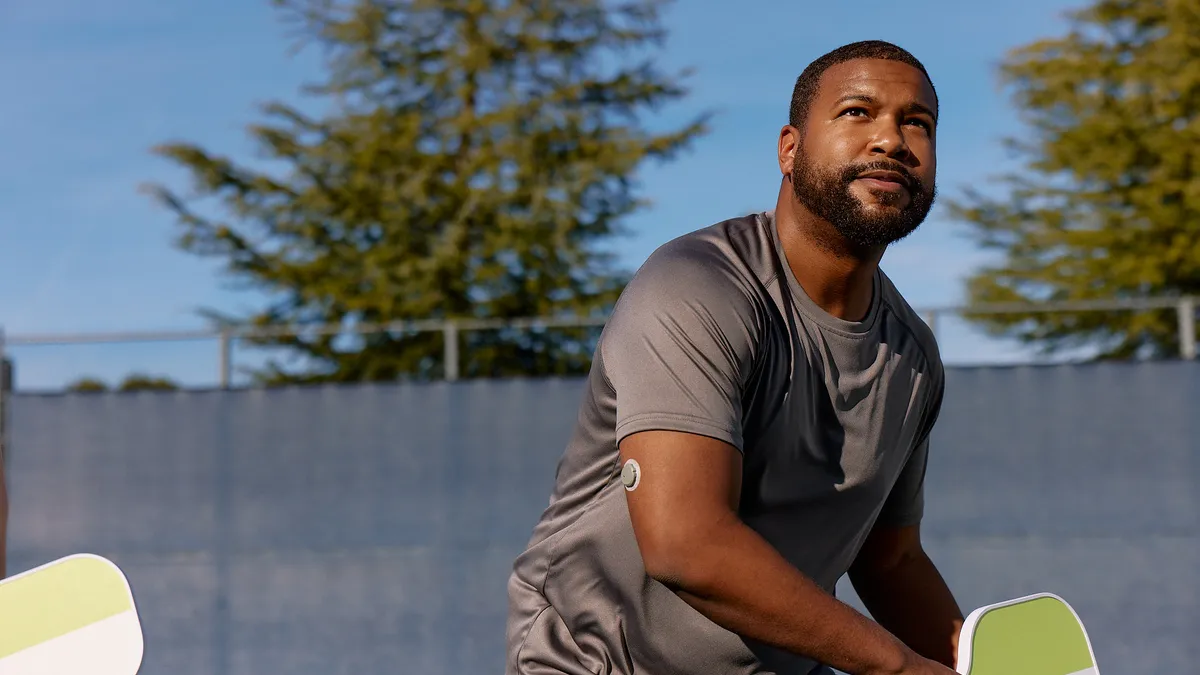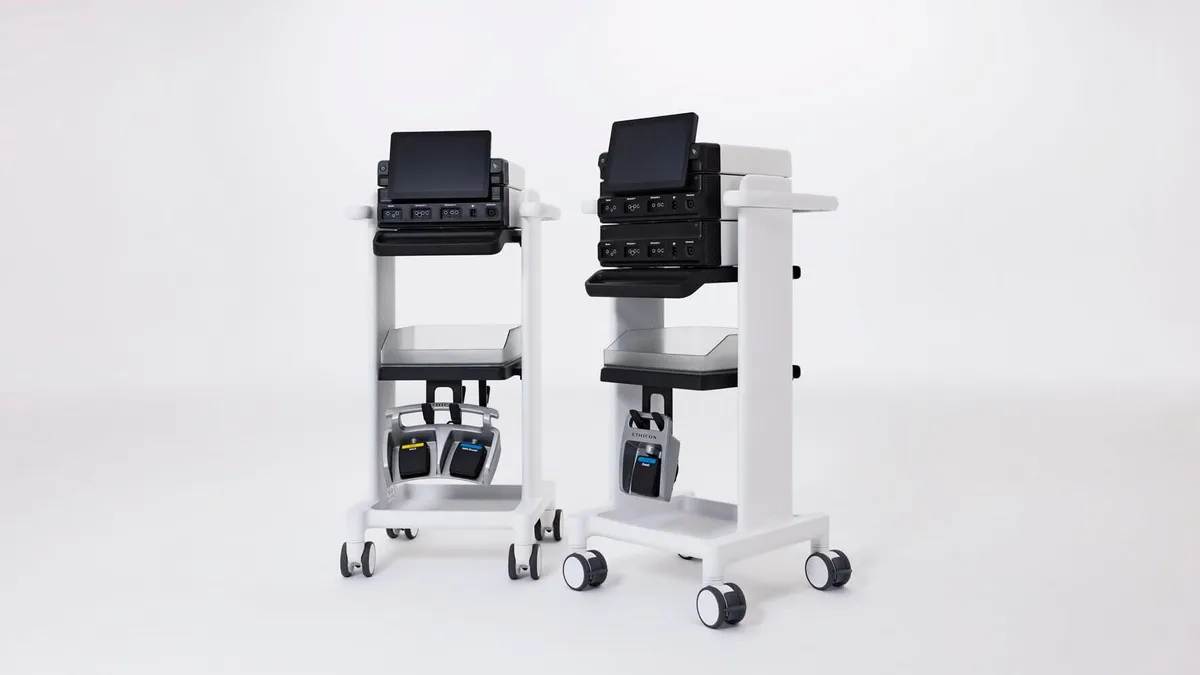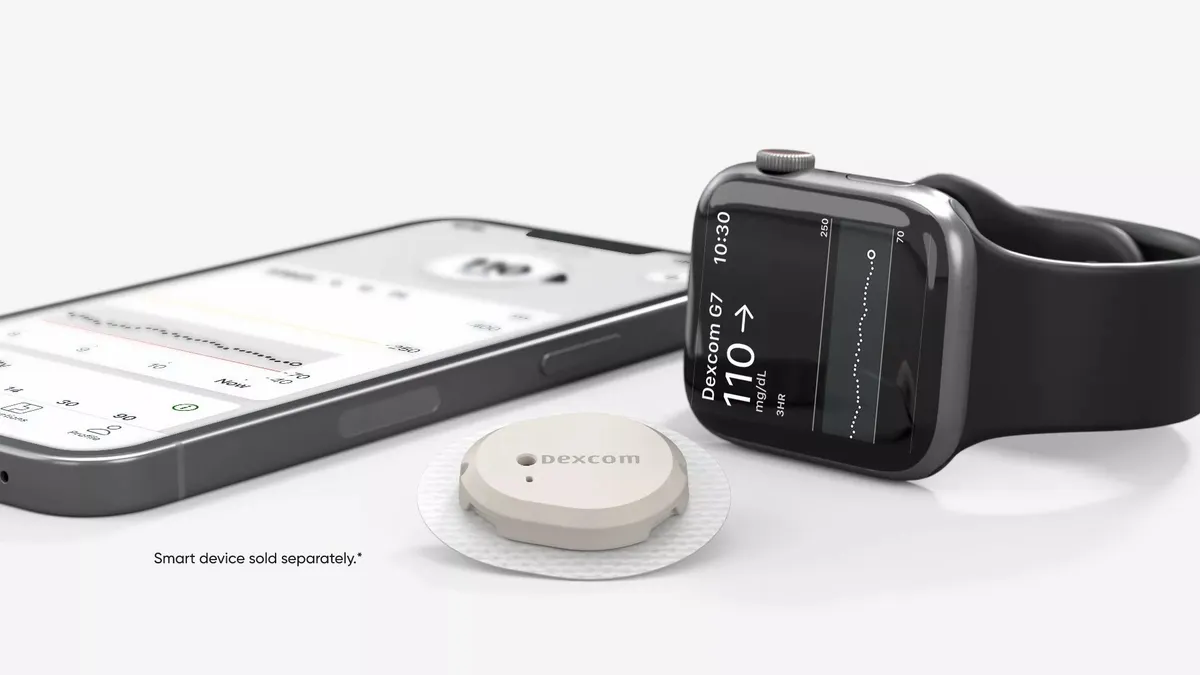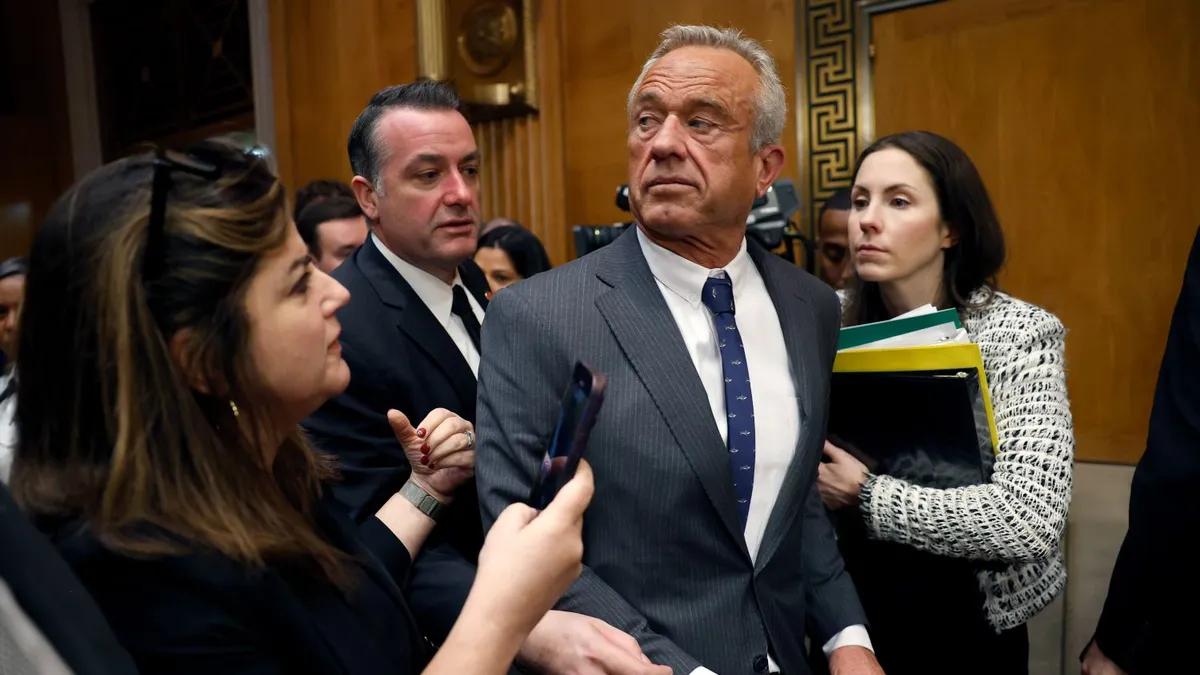The Food and Drug Administration cleared the first over-the-counter continuous glucose monitor (CGM) on Wednesday, allowing people to buy a new sensor made by Dexcom without a prescription. Dexcom had initially sought to offer its new Stelo device to people with Type 2 diabetes who don’t take insulin, but the FDA expanded on that, opening the CGM to most adults who don’t take insulin.
The broad indication clears a pathway for Dexcom to grow its CGM business, and for rival Abbott, which plans to bring a wellness-focused sensor to the U.S.
“The indication for use is broad,” said Dexcom Chief Operating Officer Jake Leach. “That covers this population that Stelo was designed for, but it also covers a broader population too. We feel that over time, the opportunity for CGMs to provide benefit to people goes far beyond diabetes.”
Dexcom expects growth as CGMs become more accessible
Stelo is based on the same hardware as Dexcom’s G7 CGM, but the smartphone app that pairs with the device was redesigned to focus on people with Type 2 diabetes who don’t take insulin and want to learn how their glucose changes throughout the day. It’s not meant to be used by people who take insulin or have a history of hypoglycemia, as those alerts are not designed into the device.
The sensor also has a 15-day wear time, which is five days longer than Dexcom’s other CGMs. Leach said the company ran a clinical study to show its performance and accuracy over 15 days.
Dexcom still plans to debut Stelo in the summer. The company hasn't yet said where it will sell Stelo or how much it will cost. J.P. Morgan and William Blair analysts expect the device to be priced competitively with Abbott’s Freestyle Libre CGMs, which cost about $80 per month.
“Over time, we're going to see expanded go-to-market strategies,” Leach said. “This is a brand new category.”
He added that expanding Dexcom’s sales team to call more primary care physicians is “definitely part of the puzzle.” The device will also include a feature that allows physicians to review data to see how patients are faring, even though it doesn't require a prescription.
William Blair analyst Margaret Kaczor wrote the broad clearance should increase Dexcom’s total addressable market by “many multiples,” adding about 25 million people with Type 2 diabetes who don’t take insulin to the current market of 7.5 million people in the U.S. with diabetes who take insulin. About 98 million adults in the U.S. have prediabetes, according to the Centers for Disease Control and Prevention, and they also could use Stelo under the current indication.
The over-the-counter label should meaningfully reduce barriers to access, Kaczor wrote.
“This is important not only for non-insulin users, where demand has been strong despite limited access, but it opens up the non-diabetic market for CGM technologies altogether,” she wrote in a research note on Wednesday.
Dexcom forecast that Stelo would contribute one percentage point to total company revenue growth this year, or about $40 million. Leach reiterated that projection, adding that “over time, it will be a very important part of our overall portfolio of products because it does serve such a broad segment.”
BTIG analyst Marie Thibault estimated Dexcom could see a roughly $100 million annual run-rate because of the over-the-counter access, even though the launch date for Stelo remains unchanged.
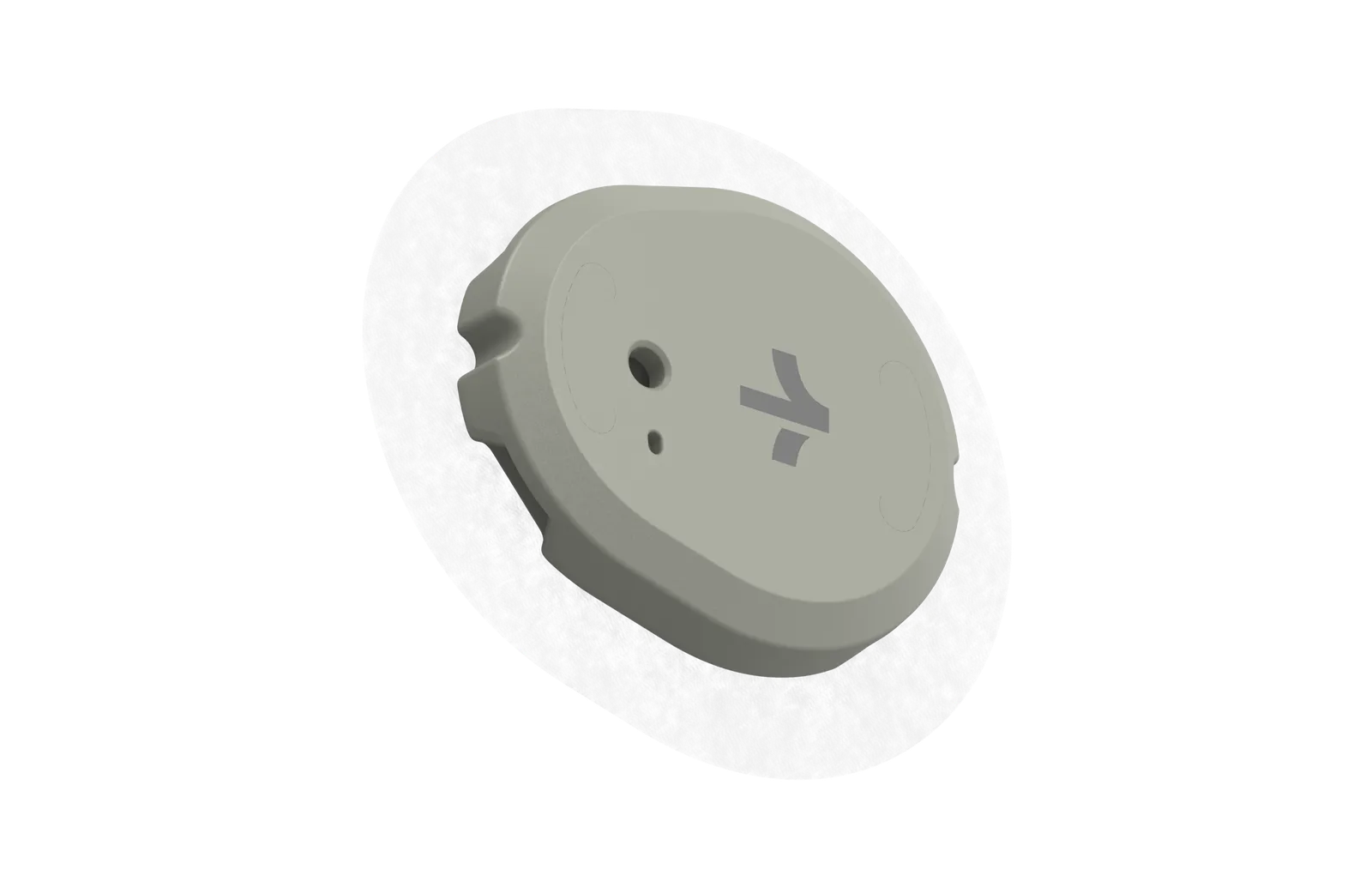
FDA decision sets a ‘high bar’ for competitors
Competitor Abbott is also working to bring its CGM technology to a broader group of people. Last year, the company rolled out a new product called Lingo, which uses CGM technology for general wellness purposes, but it is not intended for people with diabetes.
Abbott launched the subscription service in the U.K. last year, costing about 150 pounds per month, which includes two CGMs and an app-based program. The company submitted an application last year for FDA clearance but hasn’t shared a launch date yet.
“Abbott has been selling FreeStyle Libre OTC in 60 countries over the past decade,” company spokesperson Katie Walker wrote in an email to MedTech Dive. “We look forward to bringing the world's leading glucose technology to people without a prescription in the U.S. soon.”
The way the FDA handled Dexcom’s Stelo could give a hint at what’s to come for other devices.
Leach said a foundational aspect of the FDA’s decision was that the device met the requirements of an integrated CGM, meaning that it must provide readings that are accurate enough to be used for automated insulin delivery. Currently, Abbott is the only other company with a broadly used iCGM, Kaczor wrote.
She added that “future competitors, be they big tech or healthcare oriented, would need to meet the criteria for iCGM accuracy to gain approval. This is a high bar that is expensive and time-consuming to clear.”
The other important component was that people understand the device’s labeling, making it clear that Stelo is not for people who take insulin.
“If you look at the box, or the indication for use or even the mobile app, it very much steers anyone who's using insulin towards the G7 product,” Leach said.
J.P. Morgan analyst Robbie Marcus wrote in a research note that he doesn’t expect users of Dexcom’s G-series CGMs to trade down to Stelo for several reasons, including that they already have coverage through their pharmacy benefit, and the alerts are not tailored to them. Leach said most patients can access the G7 for less than $40 a month with insurance.
“We think the FDA was very comfortable approving this low-risk device OTC,” Marcus wrote. “If for some reason an intensively managed diabetic got their hands on Stelo, it would still offer the same reliability and accuracy as a G-series sensor and it’s likely that both Dexcom and pharmacies will help identify these patients and direct them to the G-series if they are in fact covered.”
Leach said Dexcom will spend the next few months preparing for its summer launch, making sure it has the tools in place to support a much broader group of customers.


